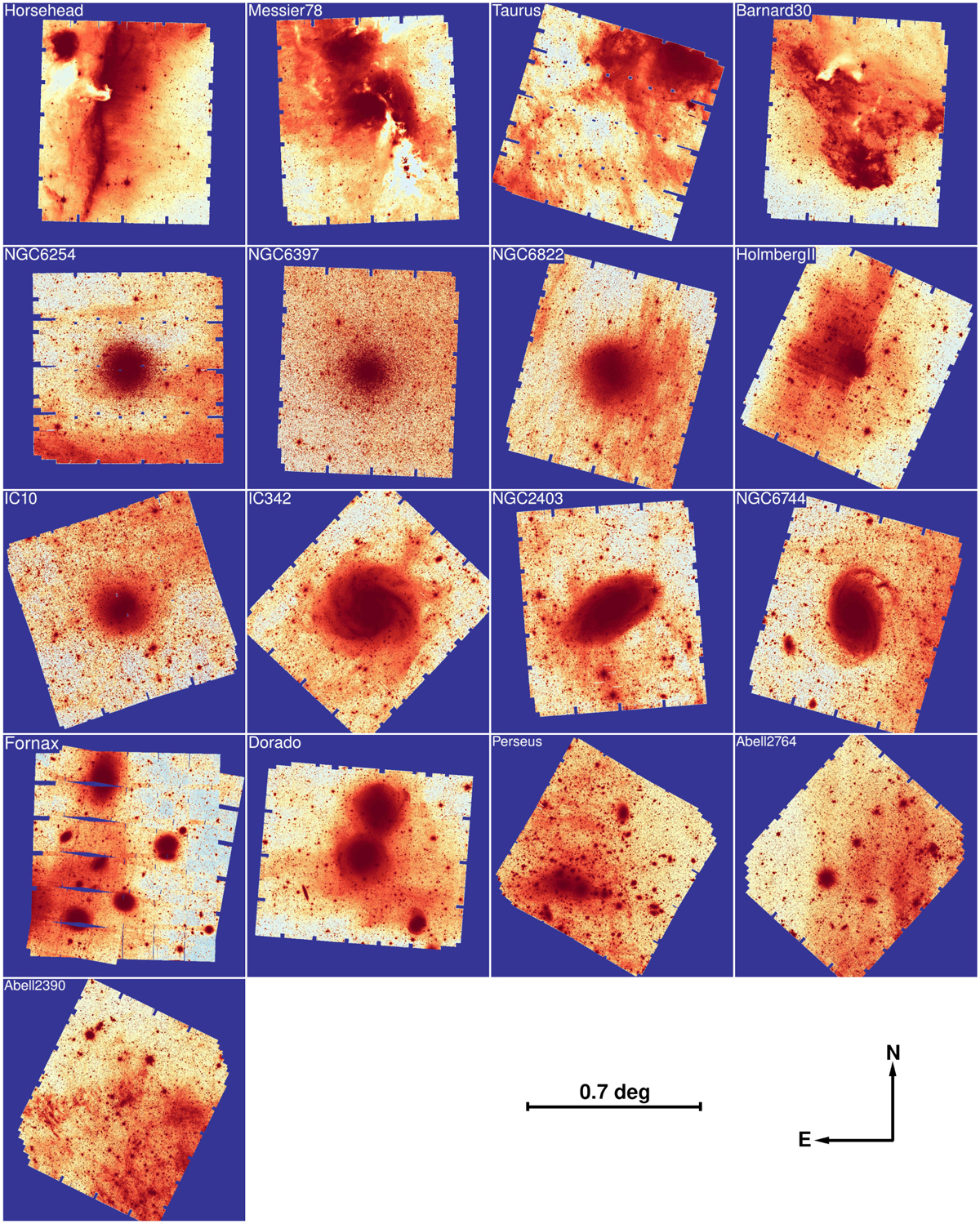Fig. B.1

Download original image
Seventeen ERO fields (approximately 0.6 deg2 each, IE preview). The blue frame encompasses the entirety of the FITS image for each science stack, guaranteeing that no quality Euclid data are omitted during projection into the equatorial coordinate system. Pixels identified as valid are those shared by both the VIS and NISP instruments. A dithering pattern impacted three fields – Taurus, NGC 6254, and IC 10 – resulting in incomplete sky coverage. The Fornax field is limited by having only two VIS exposures, leading to prominent gaps. Holmberg II, Fornax, and Dorado suffer from issues related to stray light, which will be addressed in the upcoming ERO data release. Any observed variations in the background of the remaining images stem from the LSB detection of Galactic nebulae (top row) or the presence of faint Galactic cirrus, illustrating the Euclid’s capability to easily capture these subtle astronomical features.
Current usage metrics show cumulative count of Article Views (full-text article views including HTML views, PDF and ePub downloads, according to the available data) and Abstracts Views on Vision4Press platform.
Data correspond to usage on the plateform after 2015. The current usage metrics is available 48-96 hours after online publication and is updated daily on week days.
Initial download of the metrics may take a while.


